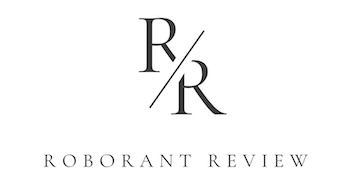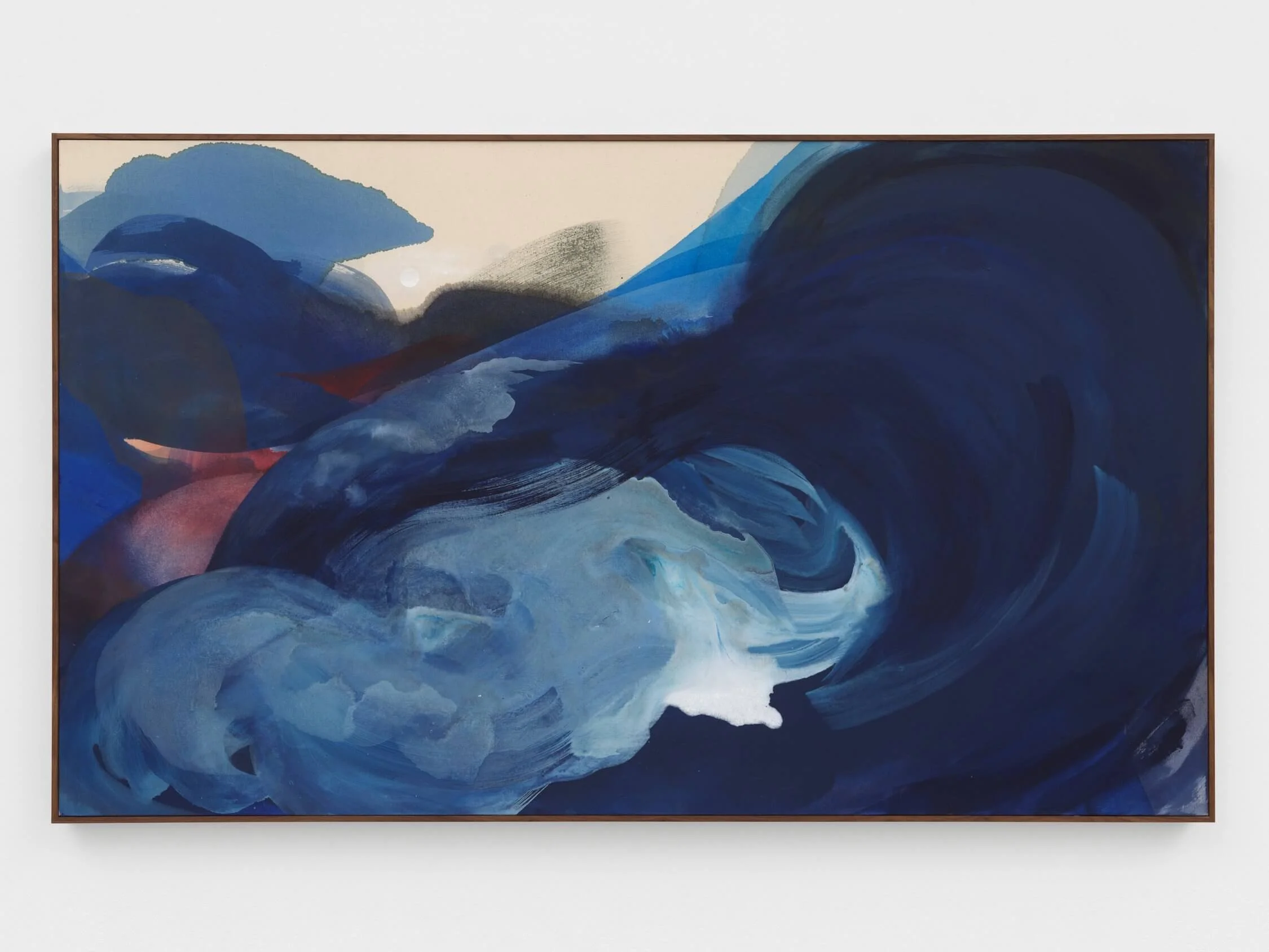Sigrid Sandström, Penumbra, Anat Ebgi
By Hugh Leeman
Luminous layers of translucent color spill across Swedish artist Sigrid Sandström's canvases, uniting sweeping brushstrokes with recurring orbs to suggest celestial bodies amidst rich, nebulous forms at Anat Ebgi, New York. Her large paintings leave raw white areas of the canvas exposed, drawing us into their light, as if to experience a biography of condensation's backlit life, inspired by atmospheric rhythms that coalesce and converge at the edge of observation.
For millennia, humans have explored meteorological phenomena as countless cultures around the world have colored such elements the home of gods, the place of utopia, and the source of deadly storms. Sandström's washes, pools of paint, and brushstrokes visualize the ancient fascination with the heavens, infusing her pigment with the mystery of the sky's water passing from ocean shores to the porous nature of rain clouds, casting the entire hydrologic cycle in technicolor.
In interviews, Sandström recounts merging with nature as she skis from her house to the studio, experiencing a sense of floating on winter snow. Once in the studio, she describes the painting process as a meditative experience that releases internal conflict. Amidst this process, her canvases take their first pigment as she pours diluted acrylic liquid paint, whose pooling edges spread like alluvial fans, recalling Helen Frankenthaler, with orbs and uninhibited brushstrokes that evoke the work of Adolph Gottlieb. Sandström's paintings exude an effortless flow as if clouds of color are narrating a poem on the dynamic nature of their existence.
The artist is not imposing her will as much as she is collaborating with drift, saturation, spill, eclipse, amidst condensation and marine masses. The fluidity of forms manifests states that range from tranquil to just at the edge of a vortex's intensity. Her works gain depth through optical breathing, a visual space between layers created by shifts in color and form, which, devoid of a vanishing point, suggests expansion and contraction, much like respiration.
As vapor defies gravity, forming clouds, pools of color combine, invoking storms on Sandström's canvases. Streaks of cadmium red get left behind the sky's moving mass of aerosol, lending movement to layers which gain context aside orb-like celestial bodies the artist employs as if illustrating Plato’s description of the formation of the universe as fire, earth, water, and air all existed in disorder before the god began to shape them… He set them in proportion, binding the visible and tangible world together so that it might be one and whole and complete. Calling forth such elements of the earth's forces, Sandström's works convey a sense of overseeing the intersection of meteorology, myth-making, and emotion.
Intimate interactions equally exist between the sea and the sky, as do danger and beauty. The work Undae, taking its name from the ancient Latin plural for wave, shows us the beauty of the ocean that belies its ferocity. Bottomless blues create depth that pulls us into a wave's dark chasms, touched at its edge in a wash of red. At center stage, a decadent dollop of un-emulsified sea foam white awaits the crest of a curling dark wave's crash, creating tension that the floating foam is about to be pulled into a dark blue abyss.
(L) Nimbus, 2025, Acrylic on canvas, 69 ⁹⁄₃₂" x 69 ⁹⁄₃₂" (R) Paradise Lost, 2025, Acrylic on canvas, 40" x 59 ⁵⁄₈"
In an exhibit that spans a spectrum from pure abstraction to hints of place, Nimbus’s composition suggests it dreams of becoming a landscape once the canvas's fire-red sun sets. A lone cloud appears to float out at sea, far from the safety of the shore, in places most of us will never see. Paradise Lost’s celestial orb performs a similar act as if the clouds hinted at throughout the exhibit have here become a place where the moon rests when the sun is seen. With their sweeping chromatic veils, Sandström shows us atmosphere in flux, what light becomes as darkness sets in, and of the darkness when it meets day.
Sandström's Ravel series suggests an artist keen on showing us the parts that compose the sum, upon which all systems depend. Ravel IX evokes a diffusion of inks steadied despite time, just as night eventually overtakes light, without the sea, how would we perceive the sky? If atmospheric elements are interdependent, what of the worlds between antipodes?
Penumbra produces a horizonless space, layering sea storm with nebula and nimbus. In the space between dark and light, Sigrid Sandström visually manifests vast systems that have long challenged comprehension. Her paintings create a visual language for the unstable, reflecting uncertainty as an essential component of awe and wonder. True to the nebulous nature of the cosmological systems that have inspired us since the dawn of time, Sandström has said of her work, "My paintings have many secrets and hidden layers beneath the surface." Breathing between her hidden layers, the artist creates a dynamic screen for emotive experience and the projection of imagination, recalling ancient myth-making and the mysteries that exist in half-lit shadows, shrouding elemental forces in secrecy.








